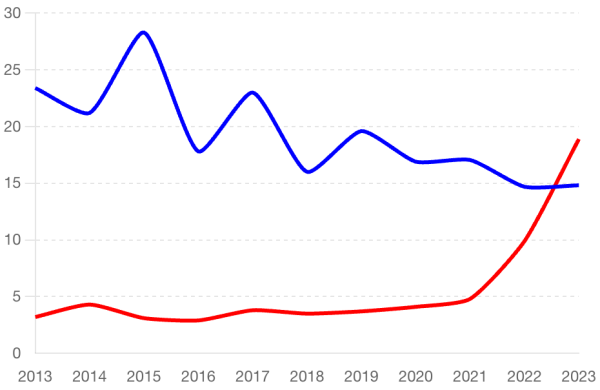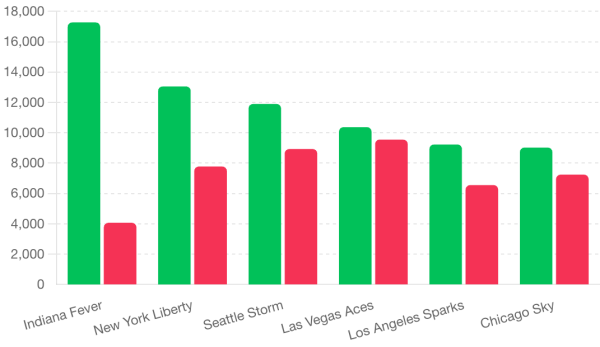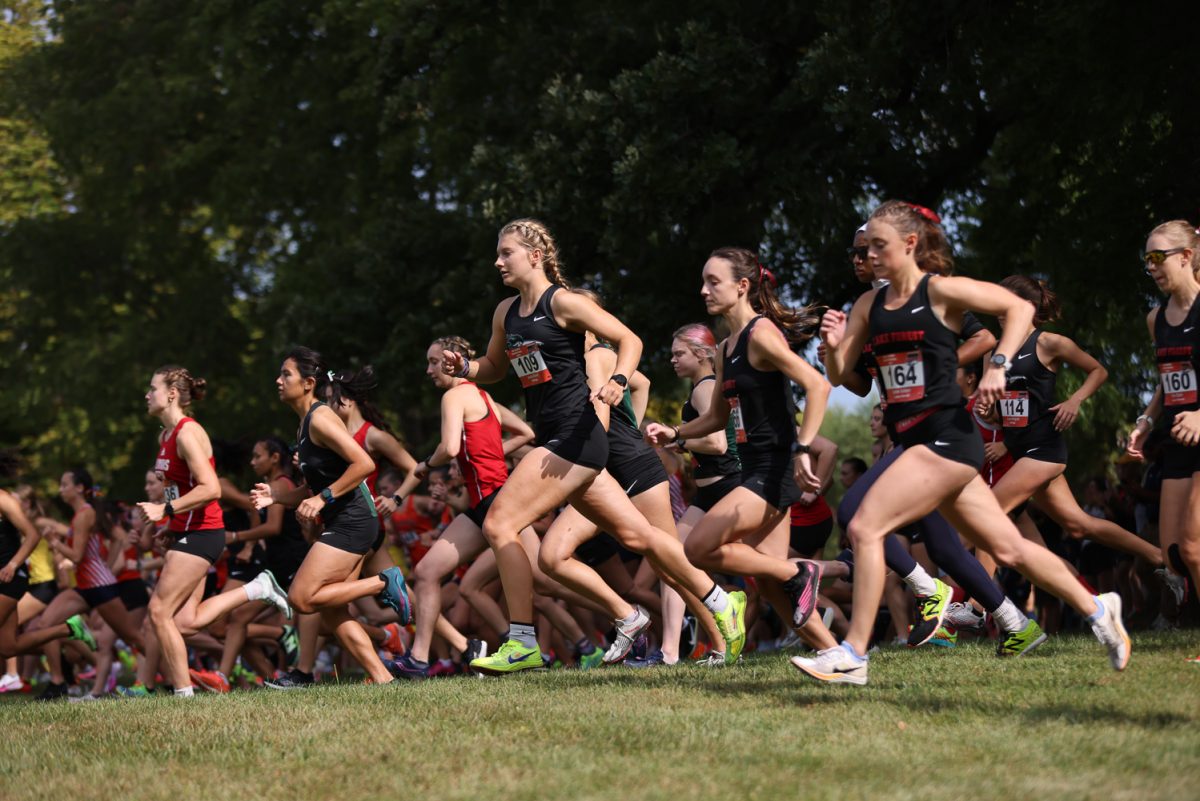The WNBA’s historic start to the 2024 season is one marked by many firsts. For the first time in league history, all twelve teams will fly chartered flights, television ratings and attendance are at all-time highs, and the general buzz from the media and public is something the league has not seen in its 28-year history.
What’s at the center of these changes? A class of rookie superstars, led by Indiana Fever guard Caitlin Clark and Chicago Sky forward Angel Reese, who are taking the league by storm.
But their stardom is nothing new, both Clark and Reese helped transform women’s basketball during their college tenures at University of Iowa and Louisiana State University, respectively.
Clark left Iowa widely regarded as one of the greatest college basketball players of all time. Her ability to shoot from seemingly anywhere on the court and high basketball IQ led to her shattering countless NCAA records, including the 54-year-old record for most career points scored across both men’s and women’s college basketball.
Clark’s stardom also led to the Iowa women’s basketball team doubling the ticket sales of Iowa’s men’s basketball team, a feat rarely, if ever, seen at the college basketball level.
Down in the Bayou, Reese became a household name for her physical dominance and scoring prowess at LSU, and doing so while entertaining fans with her flashy demeanor. No matter the opponent, Reese seemingly always controlled the paint; she rebounded the basketball at an alarming rate and left LSU only eight rebounds shy of the NCAA single-season record.
While both women earned their share of personal records and accolades, their most important contribution is marked by the explosion of popularity and interest in women’s basketball that they are directly responsible for.
In the past, women’s college basketball typically took a back seat to the men’s sport, as the men’s championship game more than doubled the ratings of the women’s championship game each year. Clark and Reese helped shift the narrative, as their initial matchup in the 2023 NCAA championship boasted 9.9 million viewers, a 104% increase from the previous year’s title game.

A year later, Clark returned to the championship game and drove the ratings up to 18.7 million viewers, marking the first time in the sport’s history that a women’s championship game outdid a men’s championship game in terms of TV ratings.
The feat capped off Clark’s historic college career with a message that women’s basketball had arrived, and could compete in ratings with any other sport regardless of gender.
Now as rookies in the WNBA, Clark and Reese continue to capture the public’s attention. There have been some bumps in the road, natural for a rookie in any sport, every game they play draws the eyes of fans and media alike. The Indiana Fever and Chicago Sky have become must-watch teams and have generated revenue at an amount never seen before, as the Fever’s team store sales were up by 13 times after Clark was drafted in early May.
While Clark and Reese have earned superstar status already, it’s important to note that the WNBA’s rise in popularity did not start solely with this rookie class. The league has been on an upward trajectory in recent years, as TV ratings began to steadily climb between the 2021 and 2023 seasons, largely thanks to the exceptional talents and marketable players by the likes of A’ja Wilson, Breanna Stewart and Kelsey Plum, to name a few. These stars laid a strong foundation when they entered the league and set up Clark and Reese’s debuts for success.
The influx of talent from players like Clark and Reese and the superb rookie class around them, combined with the league’s established stars, has led to a dramatic increase in ratings and attendance. The season’s opening weekend doubleheader in early May saw a 143% increase in viewership compared to last year’s opening weekend.

TV ratings are not the only area that the league has seen growth. As of May 26, the average league attendance was up a staggering 40% compared to last year’s average attendance at the end of the season.
The impact of the new generation of players is nothing short of transformative. At the forefront, the overall skill of the players has appeared to reach new heights, most obviously seen through Clark’s ability to rain threes from distances never before seen. But the new landscape of the league has shown the ability to draw viewers, inspire young athletes and overall bring new attention to women’s basketball.
As the league continues to grow, it’s clear that today’s stars have established the league as a staple of American sports. While once struggling with ratings and attendance, the WNBA has completely transformed, drawing hordes of new fans and inspiring younger female athletes along the way. The future of the WNBA is bright, and the 2024 season is just the beginning of this exciting new chapter.









